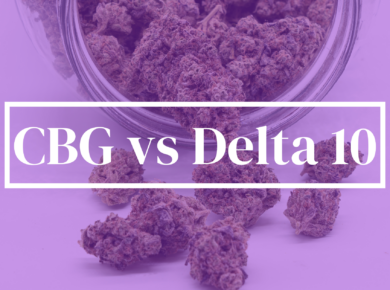Dive into the universe of cannabinoids with CBDa (Cannabidiolic Acid) and CBCV (Cannabichromevarin), two noteworthy components found in hemp and cannabis. While both are non-psychoactive, understanding their distinctions is pivotal for enthusiasts and consumers alike.
Unveiling CBDa
CBDa, or Cannabidiolic Acid, is a precursor to the widely recognized CBD (Cannabidiol). Predominantly found in raw and unheated cannabis, CBDa transitions into CBD through a process known as decarboxylation when exposed to heat.
Spotlight on CBCV
CBCV, standing for Cannabichromevarin, while sharing non-psychoactive traits with CBDa, is a somewhat less studied cannabinoid. Derived from CBC (Cannabichromene), CBCV is believed to harbor properties akin to other cannabinoids, despite its distinct chemical structure.
Drawing the Line Between CBDa and CBCV
Despite both originating from the cannabis and hemp plants, CBDa and CBCV differentiate themselves through their parent compounds and chemical structures, potentially leading to different impacts and interactions with the body’s endocannabinoid system.
Legal and Safety Notice
While certain cannabinoids are legal in various regions, it is imperative to consult local regulations before acquiring or utilizing any cannabinoid products.
Many States allow hemp derived cannabinoids under the 2018 Farm Bill as long as they contain less than .3% D9 THC. Some States have explicitly banned cannabinoids like Delta 8, so check your local rules and regulations before purchasing.
Here’s the rules for Kush.com and more details
Frequently Asked Questions (FAQs)
- What Are CBDa and CBCV? CBDa and CBCV are non-psychoactive cannabinoids discovered in cannabis and hemp. CBDa serves as a precursor to CBD, while CBCV derives from CBC.
- How Are CBDa and CBCV Extracted? Predominantly, CO2 extraction is employed to extract CBDa and CBCV, using pressurized carbon dioxide to isolate phytochemicals from the plant effectively and safely.
- Distinguishing CBDa from CBCV? CBDa requires decarboxylation to transform into CBD, while CBCV, derived from CBC, doesn’t undergo such a process.
- Combining CBDa and CBCV: Is It Possible? Indeed, many products combine various cannabinoids, including CBDa and CBCV, subscribing to the “entourage effect” theory, suggesting enhanced efficacy when cannabinoids are used synergistically.
- Potential Uses of CBDa and CBCV? While avoiding specific medical claims, preliminary research indicates potential wellness applications for CBDa and burgeoning interest in CBCV’s distinct properties. Always prioritize professional consultation and personal research when exploring cannabinoid products.
Where to Explore Further?





